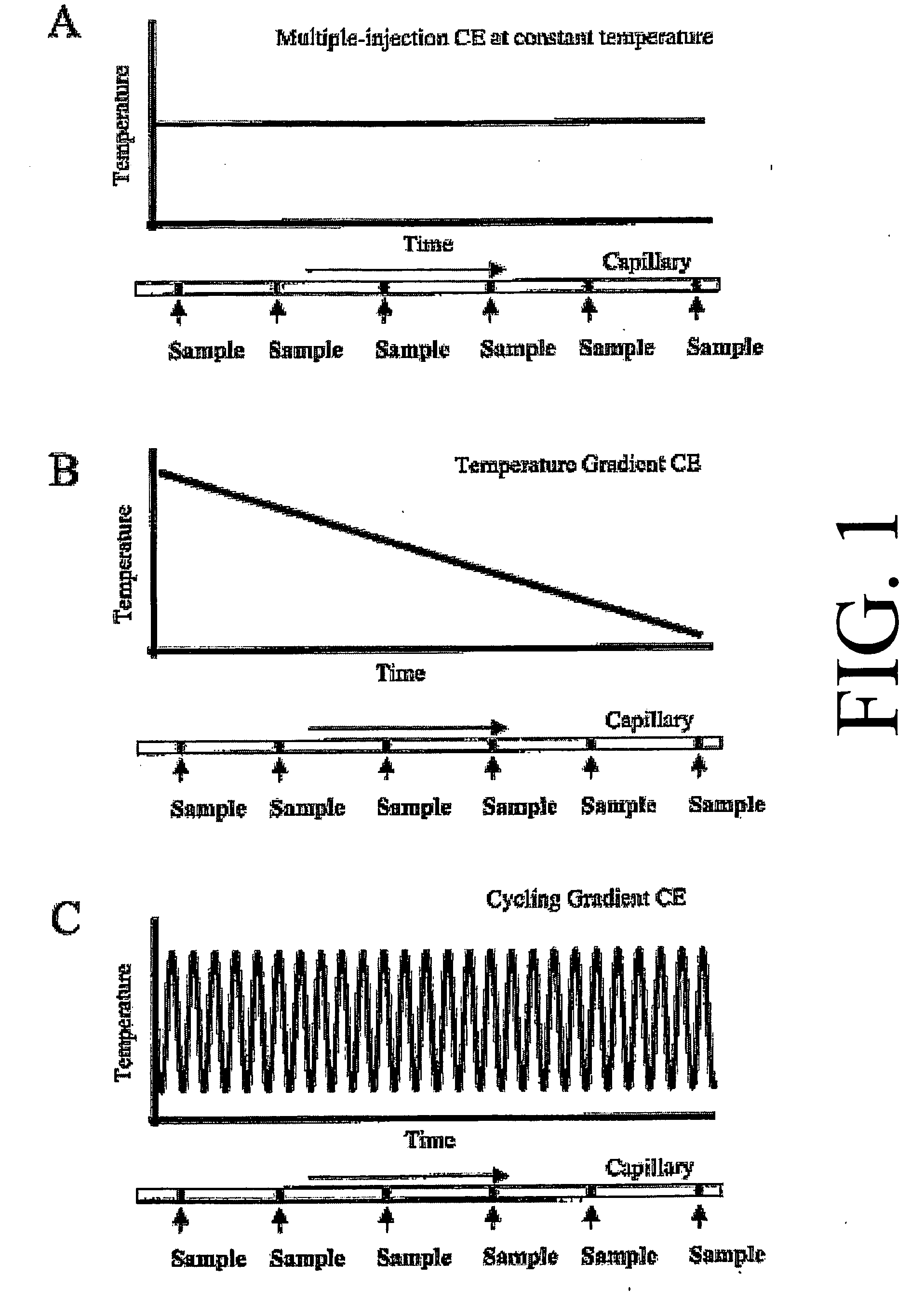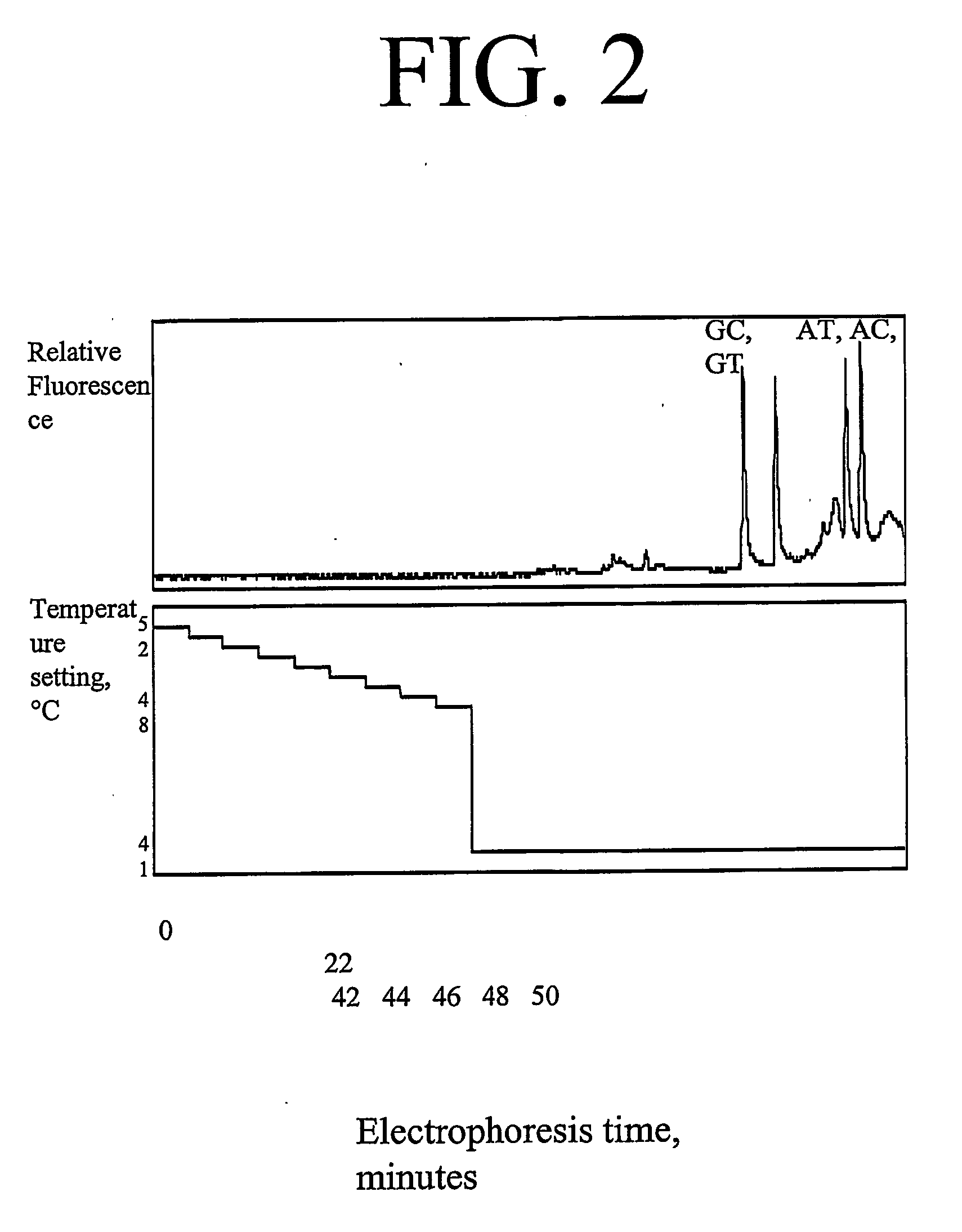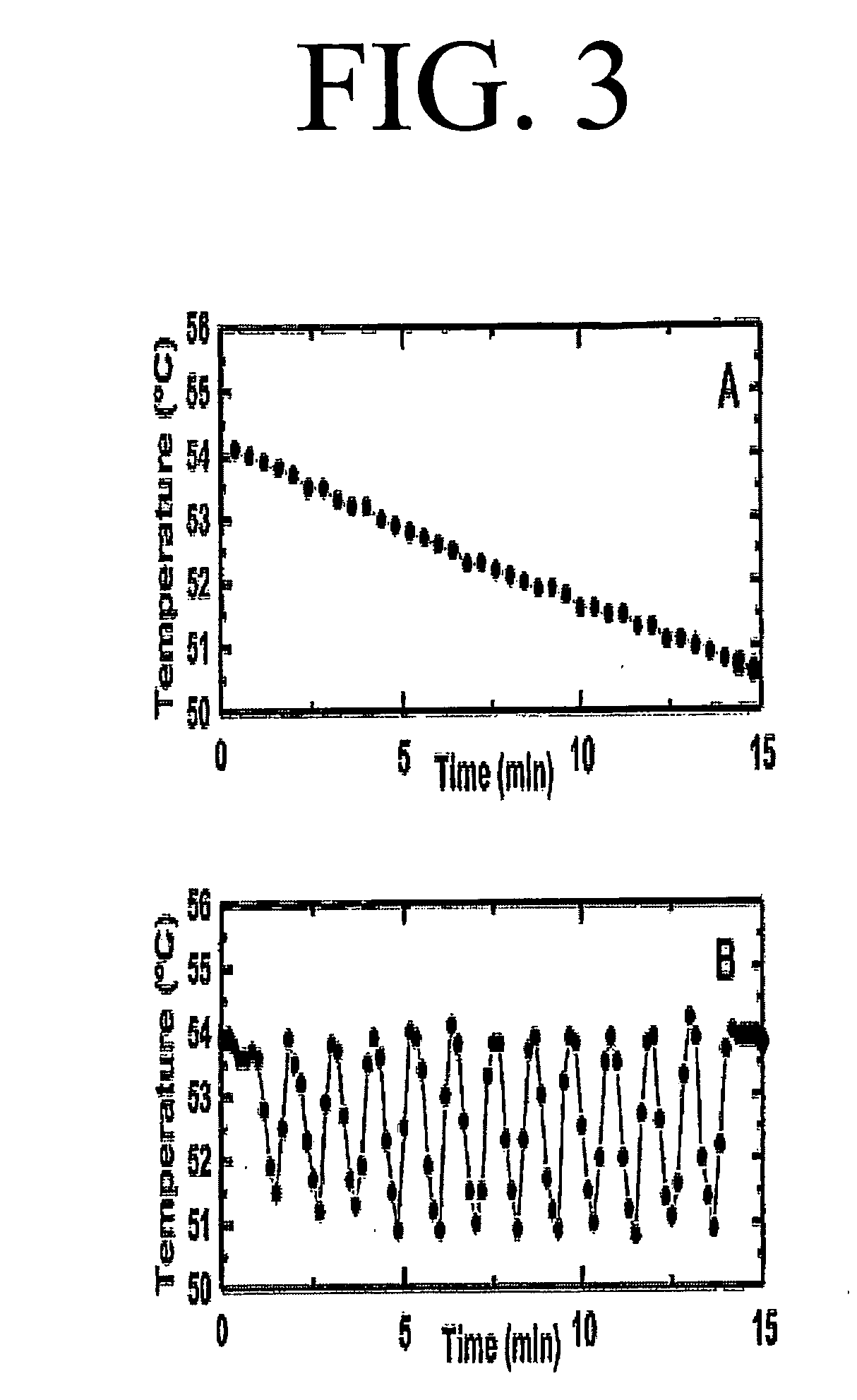Oscillating temperature capillary electrophoresis and uses therefor
- Summary
- Abstract
- Description
- Claims
- Application Information
AI Technical Summary
Benefits of technology
Problems solved by technology
Method used
Image
Examples
example 1
Cycling Gradient Capillary Electrophoresis: A Low-cost Tool for High-throughput Analysis of Genetic Variations
[0065] In the present work, the general principle that applying a temporal temperature gradient in CE can further be extended into applying a periodical temperature cycle is demonstrated. PCR is employed with one of the primers extended by a high-melting domain (the “GC-clamp”) to amplify a target DNA sequence surrounding the mutant or SNP marker. The PCR conditions are specific for each target sequence.
[0066] The application of periodic cycles allows a better compensation of the local temperature fluctuations inside the multi-capillary oven. Rapid gradient cycling with rates of up to several cycles per minute showed better results in comparison with slower cycling intervals. In addition, the instrument hardware does not appear to be able to follow the rapid temperature changes inside the chamber resulting in a relative constant average temperature of the optical component...
example 2
Direct Identification of All Oncogenic Mutants in KRAS Exon 1 by Cycling Temperature Capillary Electrophoresis
[0074] Over the past few decades, advances in genetics and molecular biology have revolutionized the understanding of cancer initiation and progression. Molecular progression models outlining genetic events have been developed for many solid tumors, including colon cancer. Previous reports in the literature have shown a relationship between different KRAS mutations and prognosis and response to medical treatment in colon cancer patients. Furthermore, the presence of a mutated KRAS has been correlated with different clinicopathological variables including age and gender of patients and tumor location. The mutation analysis method described herein is adapted to a 96-capillary electrophoresis instrument that allows identification of all 12 oncogenic mutations in KRAS exon 1 under denaturing conditions. To determine the optimal parameters, a series of DNA constructs generated b...
example 3
Population Screening of Single-Nucleotide Polymorphisms Exemplified by Analysis of 8000 Alleles
[0090] Described herein is a method in which the population frequency of single-nucleotide polymorphisms (SNPs) can be efficiently detected and their allele frequencies accurately measured. Selected SNPs in TNFβ, IL-4, and CTLA-4 were used to demonstrate the method. Blood from 4000 individuals was pooled, DNA was extracted, and target sequences were PCR-amplified and analyzed by denaturant capillary electrophoresis. Alleles were separated into peaks based on melting properties of the double DNA helix. Frequencies of the different alleles were determined by calculating the area under the peaks. Allele frequencies and Hardy-Weinberg equilibrium estimated from the pooled data were verified by analyzing 7.5% of the samples randomly selected from the blood donor series. The method herein is suitable for single-samples and / or pooled-samples analysis of SNPs, in which sample treatment is kept to...
PUM
| Property | Measurement | Unit |
|---|---|---|
| Temperature | aaaaa | aaaaa |
| Temperature | aaaaa | aaaaa |
| Temperature | aaaaa | aaaaa |
Abstract
Description
Claims
Application Information
 Login to View More
Login to View More - R&D
- Intellectual Property
- Life Sciences
- Materials
- Tech Scout
- Unparalleled Data Quality
- Higher Quality Content
- 60% Fewer Hallucinations
Browse by: Latest US Patents, China's latest patents, Technical Efficacy Thesaurus, Application Domain, Technology Topic, Popular Technical Reports.
© 2025 PatSnap. All rights reserved.Legal|Privacy policy|Modern Slavery Act Transparency Statement|Sitemap|About US| Contact US: help@patsnap.com



